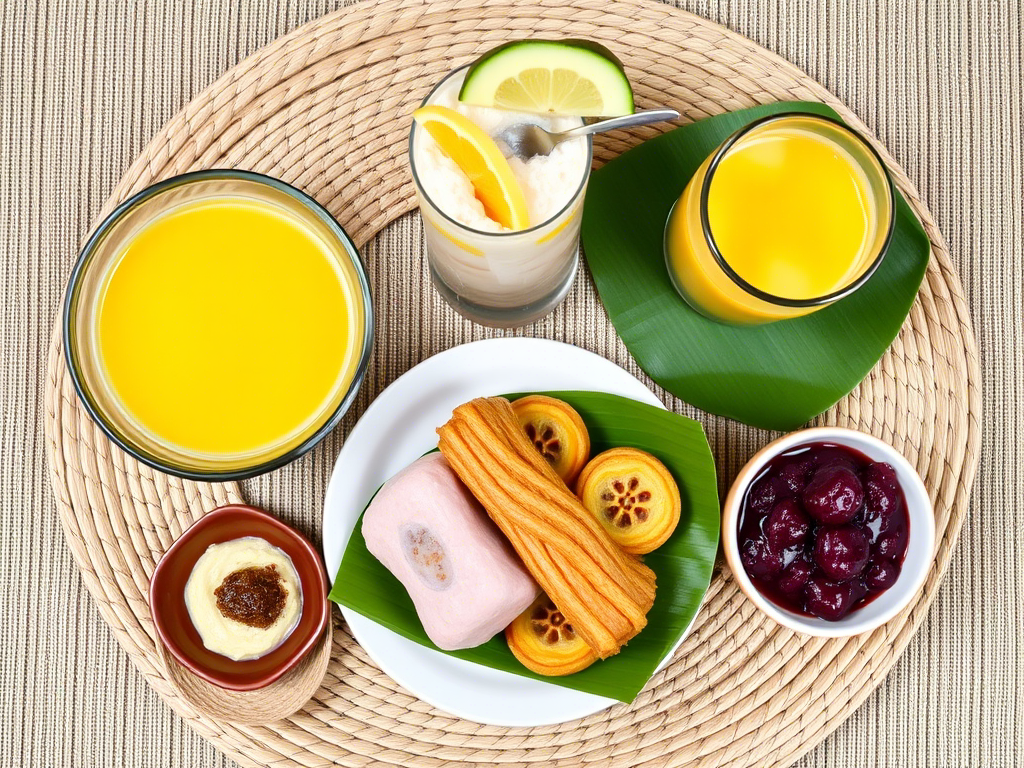15 Irresistible Filipino Desserts That Will Sweeten Your Day!
If there’s one thing that truly captures the heart of Filipino cuisine, it’s the colorful, creative, and downright delicious world of Filipino desserts. From icy halo-halo to creamy leche flan, these sweet treats are more than just indulgent. They are a vibrant part of Filipino culture, often served at birthdays, fiestas, and everyday family meals.
Whether you’re curious about global flavors or simply craving something unique, this sweet lineup will take you on a tropical journey. Expect chewy textures, bold flavors, and plenty of coconut and ube. Let’s explore the most irresistible Filipino dessert recipes you’ll want to try today.
Table of Contents
What Makes Filipino Desserts So Unique?
Filipino desserts are a joyful explosion of flavor, texture, and culture. They mix tropical ingredients like coconut, jackfruit, and vibrant purple yam with Spanish, Chinese, and Southeast Asian culinary influences. This fusion creates a dessert experience that’s as rich in history as it is in taste.
What really makes them shine is their variety. You’ve got chewy rice cakes called kakanin, chilled fruit-and-jelly medleys like halo-halo, and smooth custards such as leche flan. Some are wrapped in banana leaves, others are steamed in colorful molds, and many are served cold to beat the tropical heat.
The best part? Most of these treats are easy to prepare with just a few simple ingredients. Whether you prefer something creamy, fruity, chewy, or sticky, there’s a Filipino dessert recipe out there ready to steal your heart and your sweet tooth.
Halo-Halo: The Ultimate Filipino Dessert Experience
Few desserts capture the spirit of the Philippines like a tall, icy glass of halo-halo. This iconic summertime favorite, which means “mix-mix” in Tagalog, is a joyful collision of colors, textures, and tropical sweetness that turns any hot day into a celebration.
Picture this: layers of sweetened saba bananas, red mung beans, coconut jelly, and jackfruit piled beneath a mountain of finely shaved ice. A generous pour of evaporated milk seeps through the cracks, and right on top sits a scoop of rich ube ice cream or a silky slice of leche flan. It’s not just a dessert, it’s an edible artwork.
What makes halo-halo unforgettable is the surprise in every bite. One spoonful is chewy, the next creamy, then suddenly fruity or crunchy. It’s playful, refreshing, and wildly satisfying.
Despite its decadent look, halo-halo is easy to make at home. Just stock up on a few staple ingredients and let your creativity run wild. Whether you serve it in a tall glass or a coconut shell, this is the kind of Filipino dessert recipe that instantly steals the spotlight.
Leche Flan: Silky and Sweet Perfection
One of the most beloved Filipino desserts of all time, leche flan is the ultimate showstopper at birthdays, fiestas, and Sunday family dinners. It’s a rich custard made from egg yolks, sweetened condensed milk, and a whisper of vanilla, all topped with golden caramel sauce.
The texture is what sets leche flan apart. Silky smooth, it melts in your mouth with every spoonful. It’s often steamed in oval-shaped tin molds called llanera, giving it that signature look you’ll recognize at any Filipino celebration.
While it may seem fancy, leche flan is surprisingly easy to make. It uses just a handful of ingredients, and once you get the caramel right, you’re already halfway there. Some families even add a touch of citrus zest or coconut milk to put their own twist on this classic.
If you’re new to Filipino dessert recipes, leche flan is a must-try. It’s timeless, comforting, and guaranteed to win hearts at the dinner table.
Ube Halaya and Ube-Based Treats
If you’ve ever paused to admire a dessert because of its bold purple color, chances are you’ve come across ube. This vibrant Filipino purple yam doesn’t just look good — it delivers a sweet, nutty flavor and creamy texture that transforms simple recipes into unforgettable experiences.
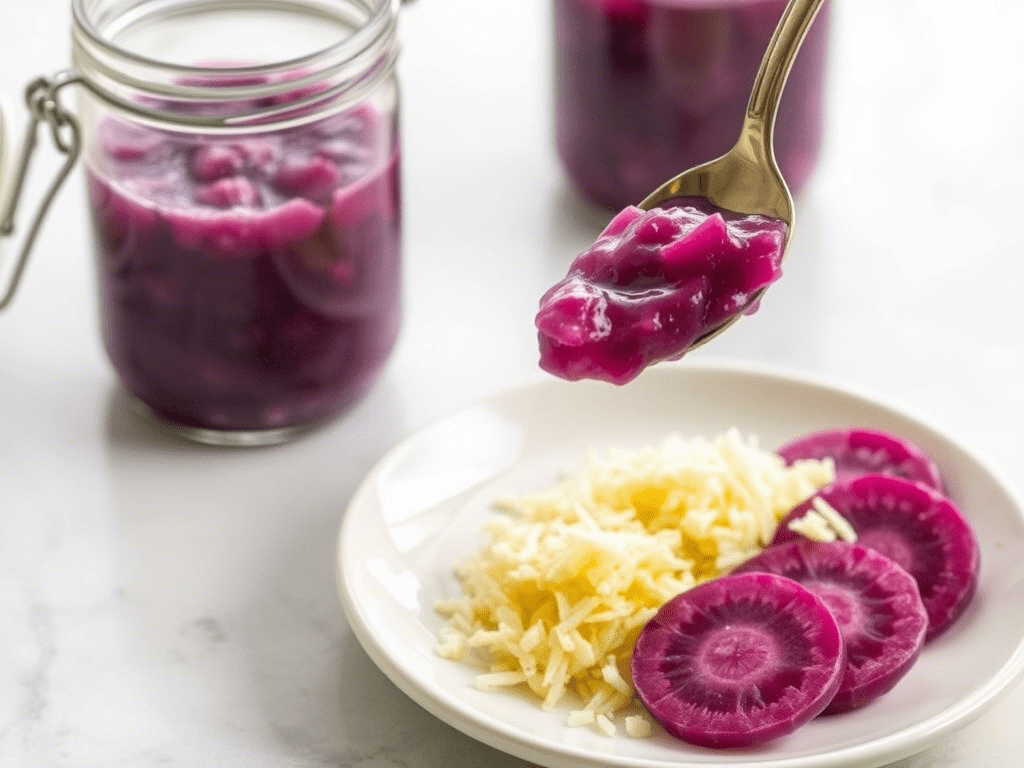
At the center of the ube universe is ube halaya, a rich and silky jam made by simmering mashed ube with sweetened condensed milk and butter until it thickens into a luscious spread. Chilled and topped with a bit of grated cheese, it becomes a dessert all on its own or a star ingredient in many other Filipino desserts.
Ube goes far beyond halaya. You’ll find it layered in colorful cakes, blended into milk teas, swirled into cheesecakes, or stuffed into soft buns and pastries. It’s a versatile flavor that feels both nostalgic and modern, and it shines in every form.
Making ube halaya at home is easier than it looks. With frozen grated ube, a saucepan, and a little patience, you’ll have a batch ready to impress. Whether you’re baking or just spooning it over toast, adding ube instantly upgrades your Filipino dessert recipes.
It’s sweet, comforting, eye-catching, and proudly Filipino.
Kakanin: Sticky Rice Delights
If comfort had a flavor, it would taste like kakanin. These sticky rice delicacies are at the heart of many Filipino desserts, bringing warmth, nostalgia, and a deep connection to Filipino heritage with every bite.

Take bibingka for example. It’s a soft, airy rice cake baked in banana leaves that fills the air with a sweet, smoky aroma. Topped with grated coconut, salted egg, or cheese, it’s a magical balance of sweet and savory. One bite and you’re instantly transported to a Christmas morning or a busy market street in Manila.
Then there’s sapin-sapin, a vibrant, tricolor rice cake layered with flavors like purple ube, coconut, and langka (jackfruit). Its chewy texture and burst of colors make it as fun to eat as it is to serve. No celebration feels complete without it on the table.
Suman, the humble classic, is a sticky rice log wrapped in banana leaves and steamed until perfectly tender. Some like it dipped in sugar, others prefer it with ripe mango slices or a warm drizzle of latik. However you eat it, the flavor is simple but soul-satisfying.
Kakanin is more than just dessert. It’s a slice of Filipino identity. Each piece carries family stories, festive memories, and a whole lot of love. Whether you’re new to Filipino dessert recipes or grew up with them, these traditional treats will always have a place on the table.
Turon and Banana-Based Treats
Some Filipino desserts are so beloved, they feel like part of your childhood memory. Turon is exactly that — crispy, golden, sweet, and wildly addictive. You’ll find it in school cafeterias, roadside stalls, and home kitchens, especially around mid-afternoon when merienda cravings kick in.
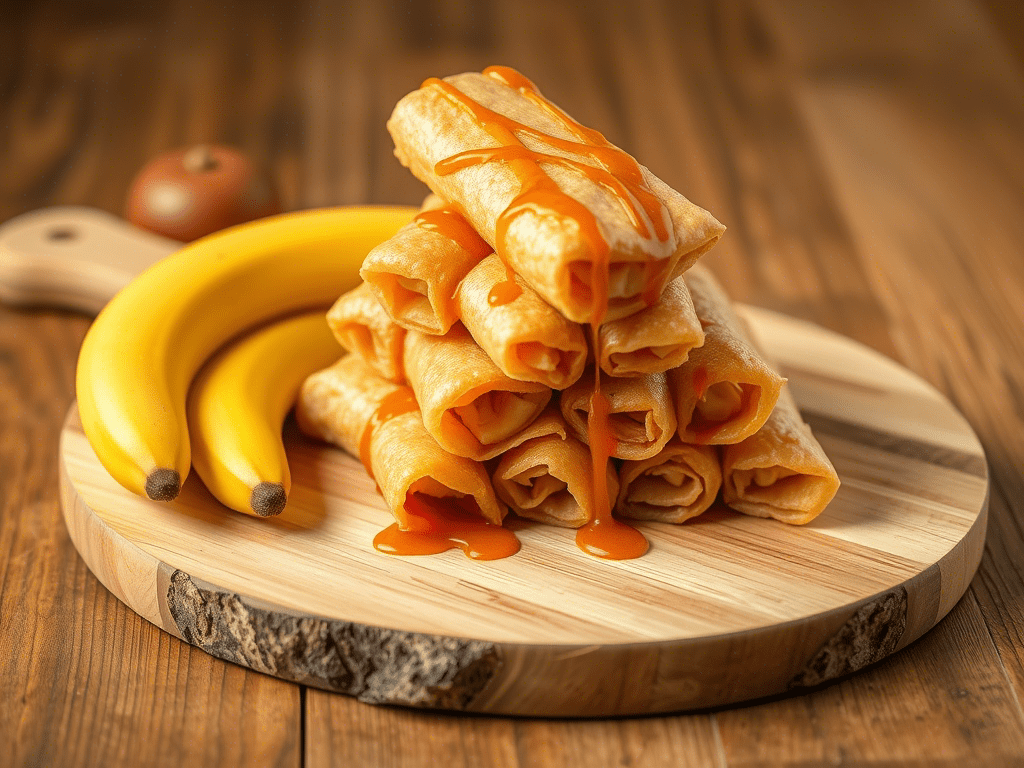
Turon begins with ripe saba bananas, a native variety that’s firmer and more starchy than regular bananas. These are sliced thin, sometimes paired with langka (jackfruit), and wrapped tightly in a thin spring roll wrapper. Before hitting the hot oil, the outside is coated in a layer of brown sugar that caramelizes as it fries. The result is a dessert that’s crunchy, sweet, and just a little sticky — the perfect balance of textures.
When you bite into a fresh turon, you get a loud crunch followed by warm, sweet fruit that’s tender but not mushy. The jackfruit adds a floral perfume and chewy texture that takes the experience to the next level. It’s the kind of snack that disappears seconds after it’s served.
But banana-based Filipino dessert recipes go far beyond turon. There’s maruya, a banana fritter made by slicing saba into thin fans, dipping it in batter, and frying until puffed and golden. It’s often dusted with sugar and served piping hot, perfect with a mug of barako coffee.
Another favorite is minatamis na saging, where bananas are slowly cooked in brown sugar syrup, sometimes enhanced with vanilla, pandan leaves, or a splash of coconut milk. It’s comforting, warm, and deeply nostalgic. You can serve it as is, or chilled with ice and milk for a cooling treat on a hot day.
Even sticky rice desserts get a banana twist. Suman sa lihiya pairs well with sweet banana slices, offering contrast to the earthy, lye-treated glutinous rice. Some modern recipes even blend mashed bananas into the rice itself for added aroma and natural sweetness.
These banana creations may be simple, but they’re a powerful reminder of how Filipino cuisine elevates everyday ingredients into something unforgettable. Whether you’re frying, simmering, or wrapping, banana desserts are full of texture, tradition, and timeless flavor.
Filipino Ice Cream and Cold Treats
If you’re exploring Filipino desserts, cold and creamy treats are a must-try. The Philippines is famous for its tropical heat, and the best way to enjoy it is with a spoonful of something frozen, sweet, and full of local flavor.
One of the most iconic Filipino dessert recipes is ube ice cream. Made from purple yam, this vibrant treat has a rich, nutty flavor that makes it stand out. You’ll find it served in cones, between warm bread buns, or on top of halo-halo, the ultimate Filipino food dessert for cooling down.
Halo-halo is more than just ice cream. This colorful shaved ice treat is layered with sweetened beans, coconut strings, banana, jelly, flan, and topped with evaporated milk and ice cream. It’s a perfect example of how Filipino desserts blend textures, flavors, and colors in creative and satisfying ways.
Another favorite is mais con yelo. This cold dessert combines shaved ice, sweet corn, milk, and sugar. It’s simple, creamy, and full of crunch. You’ll find it on many summer menus across the country. If you want an even more tropical twist, try buko pandan — a chilled dessert made with pandan-flavored jelly, young coconut, and sweet cream. It’s light, fragrant, and loved across generations.
For those looking for easy Filipino desserts, fruit shakes are always a hit. A mango shake made with crushed ice and condensed milk is as refreshing as it is simple. You can also make ice candy, which is a homemade Filipino popsicle frozen in small plastic tubes. Popular flavors include chocolate, coconut, avocado, and melon.
Families often make their own versions of Filipino dessert recipes, like banana-milk ice pops, frozen coconut milk with palm sugar, or mango puree with crushed ice. These Filipino desserts are not just delicious, they’re also easy to prepare and perfect for sharing.
These frozen Filipino desserts recipes show just how much creativity exists in the Filipino kitchen. Whether you’re serving a full glass of halo-halo or handing out homemade ice candy, cold desserts bring coolness, fun, and lots of flavor to any table.
Toppings, Sauces, and Sweet Pairings
The beauty of Filipino desserts lies not just in their bold flavors and vibrant textures, but also in how customizable they are. From crunchy toppings to rich sauces, there are so many ways to level up your favorite Filipino dessert recipes and make each bite unique.
One classic topping is latik, the golden coconut curds formed when coconut cream is cooked down. It’s nutty, toasty, and often sprinkled over kakanin, rice cakes, and puddings. You’ll find latik on top of maja blanca, bibingka, and even some ice cream versions of Filipino food dessert favorites.
Leche flan sauce, made from caramelized sugar, adds a deep richness to many sweets. Pour it over banana fritters or even a slice of cassava cake for an extra layer of indulgence. Then there’s coconut caramel, known as coco jam or “minatamis na bao,” often spread on suman or served with rice-based Filipino desserts for a creamy contrast.
For crunch, many Filipinos add toasted pinipig, which are flattened glutinous rice flakes that have been roasted until crisp. This topping gives a nutty texture that pairs perfectly with soft and silky sweets like sapin-sapin or ginataang bilo-bilo.
Even fresh fruit makes a difference. Thin mango slices on top of buko pandan, jackfruit layered with turon, or banana on suman can transform simple sweets into something special. These additions not only look good but elevate flavor and texture in every bite.
When it comes to easy Filipino desserts, sauces and toppings do the heavy lifting. A drizzle of condensed milk, a spoonful of sweetened coconut, or a handful of jelly cubes can turn basic ingredients into show-stopping treats. For halo-halo or mais con yelo, toppings are everything. More layers mean more flavor, more crunch, more color — and more joy.
The flexibility of these additions makes Filipino desserts recipes perfect for home cooks. You can mix and match based on what you have on hand, what’s in season, or your own personal sweet tooth. From humble pantry items to festive holiday spreads, it’s all about turning every dish into something special and full of personality.
Serving and Storing Filipino Desserts
Presentation plays a big role in the joy of eating Filipino desserts. Whether you’re serving them at home, during holidays, or for a special gathering, how you display your sweets adds to the experience. Many traditional Filipino dessert recipes are bright, layered, and textured, so showcasing them in clear dishes or banana leaves brings out their beauty.
For example, colorful treats like halo-halo or buko pandan look stunning in glass bowls. Use small, matching cups for leche flan or coconut jelly to give a clean and polished look. When serving Filipino food desserts like bibingka or puto, place them on woven trays lined with banana leaves — a nod to tradition that also enhances aroma.
If you’re offering a selection of Filipino desserts, variety matters. You can mix hot and cold items, soft and chewy textures, and offer both light and rich flavors. This kind of dessert spread is common in Filipino celebrations and makes each guest feel like they’re getting a taste of everything.
Storing these desserts properly keeps them fresh longer. Many easy Filipino desserts like maja blanca, ube halaya, or cassava cake can be kept in the fridge in airtight containers for up to three to five days. Cover leche flan tightly to preserve its creamy texture. If you’re prepping ahead, desserts like suman or turon can be frozen and reheated in a toaster oven.
Cold desserts like ice candy, halo-halo ingredients, or buko pandan should be stored separately before assembly to keep textures crisp and flavors fresh. This tip is especially helpful for Filipino desserts recipes that involve layers or sauces, since combining too early can make everything mushy.
For bloggers, food creators, or party hosts, labeling each dessert with its name and ingredients is a great touch. It shows care and helps guests understand the unique flavors of each Filipino dessert recipe. Plus, it’s helpful for anyone with dietary needs.
Keeping your desserts organized, fresh, and beautifully displayed is part of the fun. From traditional trays to modern setups, there are endless ways to present Filipino desserts with flair and authenticity.
Modern Twists and Fusion Ideas
The world of Filipino desserts is evolving fast, with creative chefs and home bakers reimagining traditional sweets in new and exciting ways. From flavor fusions to unexpected presentations, these modern versions are making Filipino dessert recipes trendier and more global than ever.
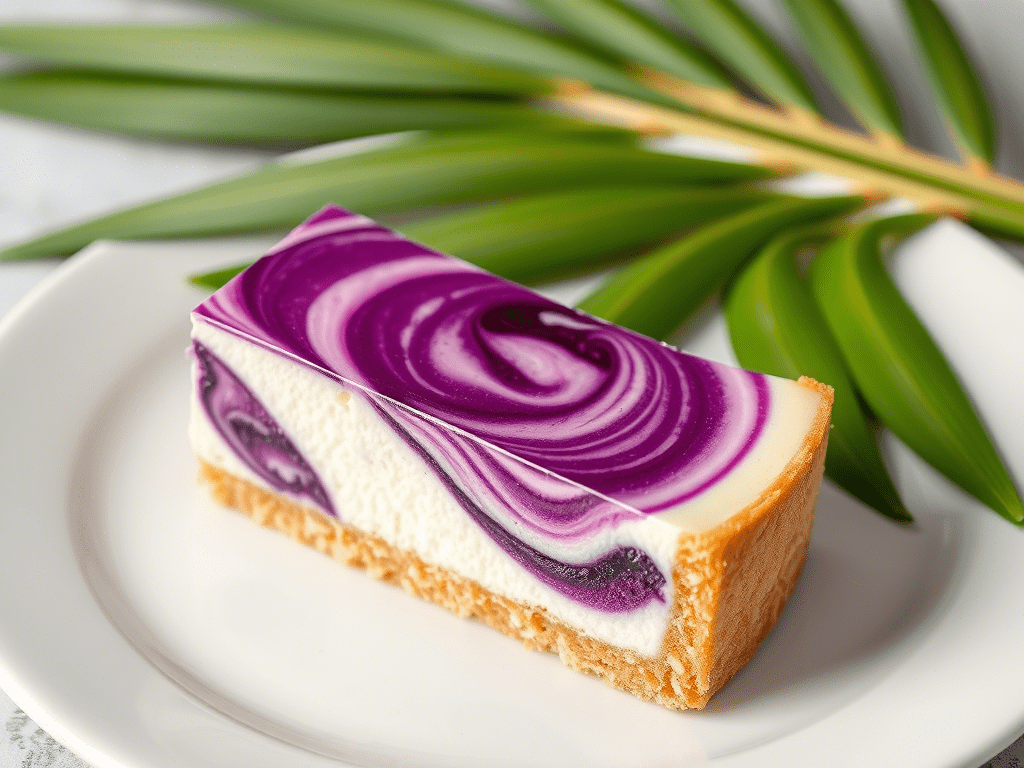
One popular innovation is the ube cheesecake. This fusion dessert combines the creamy richness of classic cheesecake with the earthy sweetness of ube, a purple yam beloved in many Filipino food desserts. The result? A visually stunning and deeply flavorful dessert that has become a favorite on social media and in bakeries around the world.
Then there’s the rise of halo-halo milkshakes. These modern takes on the layered shaved ice treat include ube ice cream, leche flan chunks, jelly, and even boba — all blended into a creamy drinkable version of one of the most iconic Filipino desserts recipes.
Filipino dessert recipes are also being transformed into bakery favorites. Imagine turon-inspired cinnamon rolls, cassava cake doughnuts, or buko pandan cupcakes. These twists not only look incredible but offer a fun way to explore easy Filipino desserts with a fresh touch.
Social platforms like TikTok and Instagram have introduced even more mashups. You’ll find pandan tiramisu, ube croissants, and coconut macaroons filled with coco jam. These creative spins make tagalog recipe desserts accessible to a wider audience, without losing their roots.
Another trend is bringing Filipino desserts to brunch. Bibingka pancakes topped with salted egg, ube waffles drizzled with coconut caramel, and leche flan French toast have all made their way to modern Filipino cafés. They blend comfort with creativity and make Filipino food dessert culture even more dynamic.
If you’re experimenting in your own kitchen, start simple. Add ube halaya to your favorite cookie dough. Mix coconut milk into buttercream. Use mango puree in a cake glaze. These small changes can help you create easy Filipino desserts with a twist that feels totally your own.
What makes these updates powerful is their respect for tradition. Every fusion starts with ingredients like coconut, sweet rice, saba banana, jackfruit, and cassava — the foundations of real Filipino dessert recipes.
FAQs About Filipino Desserts
Q1: What are the most popular Filipino desserts?
Some of the most loved Filipino desserts include halo-halo, leche flan, ube halaya, bibingka, and turon. These classics are found at birthdays, holidays, and everyday meals.
Q2: Are Filipino desserts usually served hot or cold?
It depends. Some Filipino dessert recipes like turon and bibingka are served warm, while halo-halo and buko pandan are best chilled. You’ll find a balance of both hot and cold treats in Filipino food culture.
Q3: What are typical ingredients in Filipino desserts?
Common ingredients in Filipino desserts recipes include coconut milk, glutinous rice, ube (purple yam), sweetened condensed milk, mango, cassava, and jackfruit. These flavors are key to both traditional and easy Filipino desserts.
Q4: Can I make Filipino desserts without special tools?
Yes, many tagalog recipe desserts can be made using basic kitchen tools. Sticky rice can be steamed in a pot, ube can be mashed by hand, and cassava can be grated with a standard grater.
Q5: Are Filipino desserts gluten-free?
Many traditional Filipino desserts are naturally gluten-free since they use rice flour or cassava instead of wheat. Still, it’s important to check recipes and labels when cooking or buying.
Q6: Where can I find Filipino dessert ingredients?
Look for Asian or Filipino grocery stores near you. Ingredients like coconut cream, glutinous rice, ube extract, and pandan leaves are usually available. Some easy Filipino desserts can even be made with ingredients from regular supermarkets.
Q7: How long do Filipino desserts last?
It varies by dish. Leche flan and cassava cake can last up to 5 days in the fridge. Turon is best eaten fresh. Sticky rice desserts like suman can be frozen and reheated later.
Q8: Are Filipino desserts very sweet?
Filipino sweets are often rich and sweet, but not all of them are overpowering. Many Filipino food desserts balance coconut milk, fruit, and caramel to create smooth, comforting flavors.
Q9: Can I make vegan or dairy-free versions?
Yes. You can substitute coconut milk for cream, use vegan condensed milk, or try dairy-free ube halaya. A lot of Filipino dessert recipes are easily adaptable for vegan diets.
Q10: What dessert should I try first?
Start with something simple like turon or maja blanca. These are easy Filipino desserts with few ingredients, but big flavor. Then move on to halo-halo, which is fun, colorful, and unforgettable.
Final Thoughts
You’ve now journeyed through Filipino desserts, from traditional kakanin to modern fusion treats. Each recipe delivers flavor, culture, and comfort, proving these sweets are as meaningful as they are delicious.
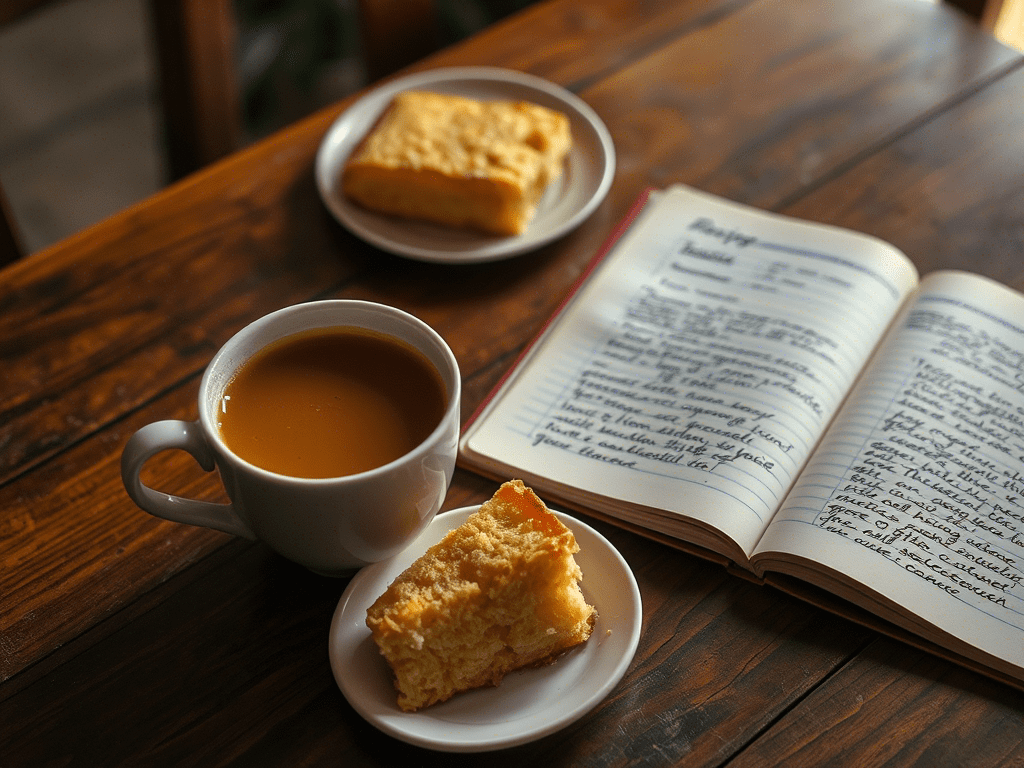
GrowVibe Reads to Try
- How to Make Ice Cream in a Bag: A Fun & Easy 5‑Minute Treat — a playful, creamy project that’s easy and mess‑free
- Fruit Dip Guide: 5 Irresistible Recipes That’ll Make Every Bite Sweeter! — learn easy ways to decorate dessert tables, including tropical sweets like halo‑halo
- Cake Mix Cookies Made Easy: 9 Irresistible Recipes You’ll Crave! — shows how simple recipes can transform into something special, much like easy Filipino desserts
Essentials for Filipino Treats
Here are some must-have tools and ingredients that make preparing Filipino dessert recipes both authentic and convenient:
- Ube Extract, 2 oz — perfect for brightening up ube ice cream, halaya, or fusion baked goods
- Halo-Halo Glass Bowl Set, 6‑piece — ideal for that colorful, layered presentation of halo-halo or buko pandan
- Aroy-D Coconut Milk, 13.5 oz (Case of 6) — a pantry essential for kakanin, custards, and coconut‑milk based Filipino desserts
Let me know if you’d like me to create a product carousel next or prep image prompts and Pinterest-ready assets. We’re almost over the finish line!

